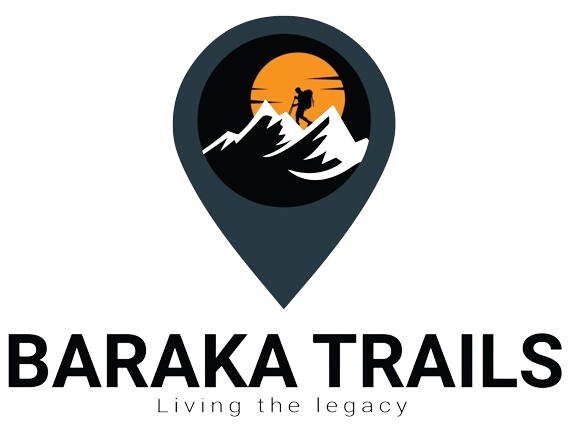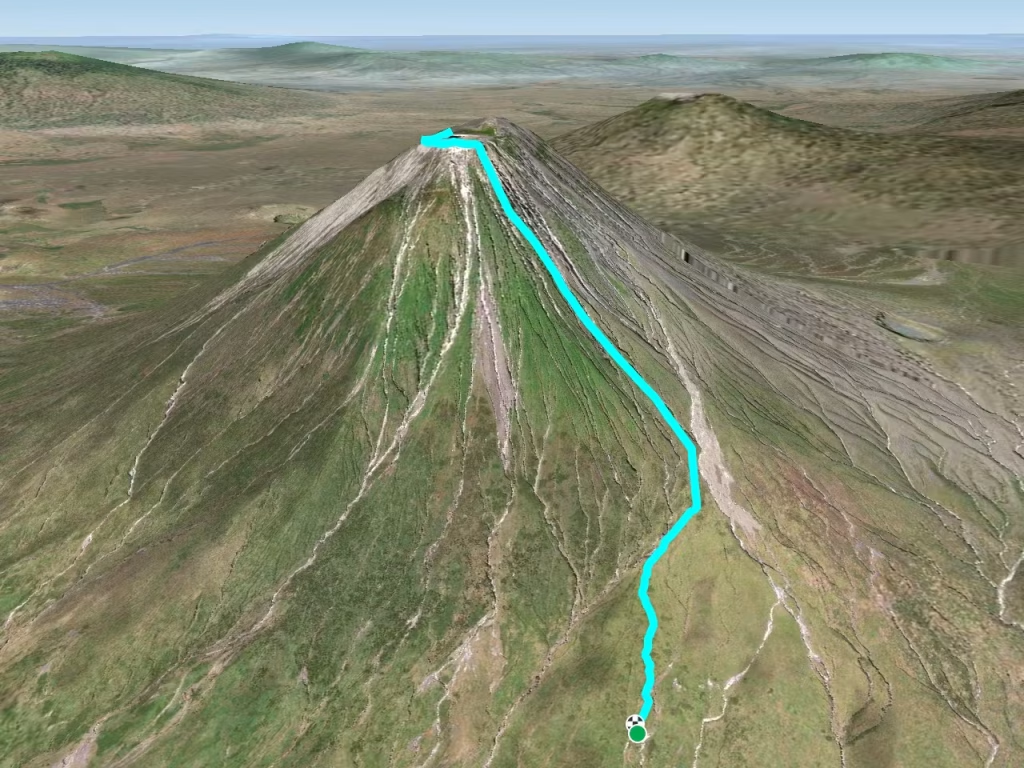Mount Ol doinyo Lengai
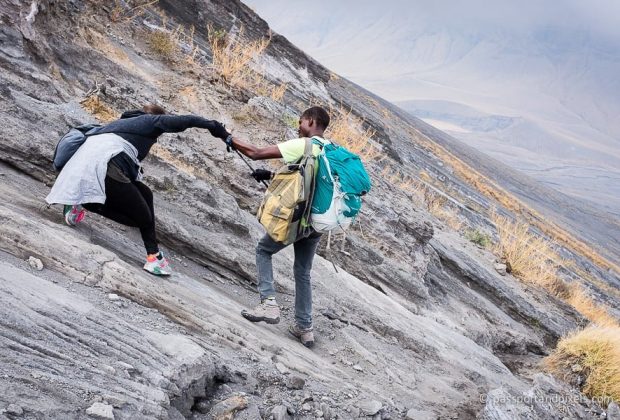
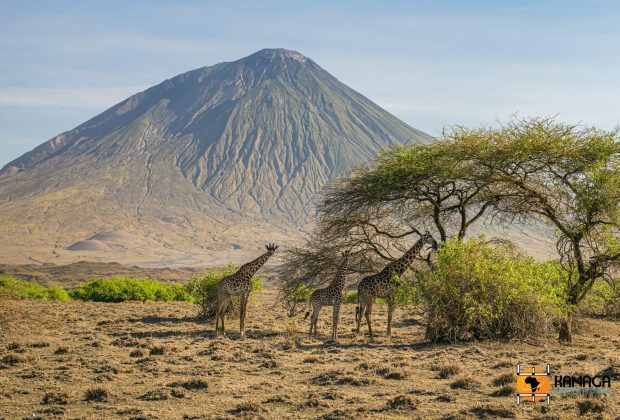
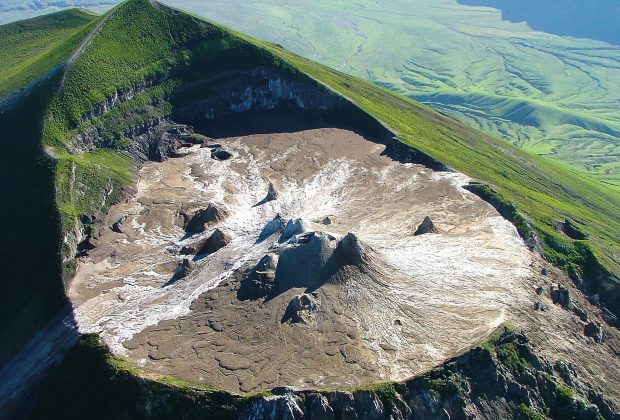
Mount Ol doinyo Lengai
“Oldoinyo Lengai” means “The Mountain of God” in the Maasai language. The summit of this strato-volcano is 2,962 metres above sea level, and affords direct views into the caldera of Tanzania’s only officially-certified active volcano, and the world’s only carbonatite volcano; records of eruptions have been maintained since 1883, the largest of which deposited ash 100 kilometres away in Loliondo on the Kenyan border to the north west.
It is located in northern Tanzania lying just south of Lake Natron in the Rift Valley, in the heart of Maasai country, and locally regarded as a sacred mountain. Looking north from it’s summit crater, the hot barren salt flats of Lake Natron stretch into the distance. To the south stretch the crater Highlands and the Ngorongoro Game Reserve. The eastern horizons dominated by Kilimanjaro and to the west the forested escarpments and hills comprising the western slopes of the Rift Valley. Every seven years Lengai erupts and plumes of smoke billow out of the crater.
It is possible to walk across the crater floor. The ascent of Oldoinyo Lengai is demanding on account of the day time heat, lack of water, steep and unsuitable slopes of ash and crumbly rocks and considerable height gain. Normally you can start ascending to summit early in the morning and reach to summit at sunrise. Short and a warm jacket are suitable for ascent, also long trousers are good as the summit before dawn can be cold. Access route from the North West allows an early descent to be made from the summit in the morning shadow.
Standing at 2,878 meters above the Soda Ash Lake Natron, Mountain of GOD as famous to the Maasai community that inhabit the area, Mountain Ol’doinyo Lengai is situated in the Ngorongoro highlands and the African Rift valley about 120 kilometers Northwest of Arusha, Tanzania.
Since the past ancestors the Holly Lengai has been used by Maasai for their prayer to their GOD known as NGAI. Ol’doinyo Lengai is the only active volcano in the world that erupt natrocarbonatite lava which is cooler than other lavas about (510 degrees C) compare to the temperatures of basaltic lavas (1,100 degrees C) with less silicon.
The Mountain frequently does minor eruptions and form cone like structures to its crater base.
While on the summit of Mountain Ol’doinyo Lengai one can sight clearly the Soda Lake Natron which accommodates and consist of good nesting sites for different bird species especially the Flamingos, pelicans and geese more than 350 different types are recorded to date.
Unlike others two highest Mountains, Lengai takes about six to seven hours to the summit crater.
Also the Mountain is an ideal place for a working safari escort by the Maasai guides with weapons tourist can sight wild animals like olive baboon, velvet, monitor lizard, hyenas, lion, leopard, jackal, Grant’s gazelle, impala and zebra.
The nearby are the Maasai BOMAS that gives you a chance to interact with the indigenous learn their cultures, taboos and traditional
Day 1: Lake Natron
Depart Arusha in the morning and travel to Lake Natron. Wild and remote, it is situated at the base of Africa’s only active volcano, Oldoinyo Lengai, known as the “Mountain of God” to the local Maasai people. The area surrounding Lake Natron contains some of the most harsh and amazing scenery in Africa and is utterly breathtaking.
Together with your Guide, you will be accompanied by a local Maasai Guide and walk up to the Engero Sero Waterfalls. Winding up through the shady gorge you will reach a beautiful natural swimming pool surrounded by steep rock walls showered by cascading spring water where you will have the opportunity to swim.
Accommodation to Mid-range accommodation
Day 2: Lake Natron – Ol Doinyo Lengai
Lake Natron is one of the most alkaline lakes in the world. Home to millions of tiny crustaceans, the lake is a haven for literally thousands of flamingos and it is one of the most important flamingo breeding grounds on earth. It is the landscape rather than the animals that is the attraction here, the area around the lake is dry, desolate and hauntingly beautiful.
After breakfast you will walk out across the baked mud to the shores of the great Soda Lake. From here, you can look back at the memorising view of Oldoinyo Lengai standing tall amongst the rolling hills and flat plains. Its ash-grey colour will remind you that this is still an active volcano.
You will return to camp in time for lunch and a leisurely afternoon before enjoying an early dinner and retiring to your tent for some rest.
At approximately 11pm, you will be woken up with tea or coffee and a light snack before meeting your Mountain Guide and beginning your trek into the night.
Accommodation to Mid-range accommodation
Day 3: Ol Doinyo Lengai (B, L)
Your climb will continue into the early hours of the morning before reaching the summit in time to witness the sun rise as it illuminates the Great Rift Valley below. The views are breathtaking. To the north you will see the salt flats of Lake Natron and in the distance, the Kenyan border. To the east you will see Mount Kilimanjaro and the Great Rift Valley and to the south stretches the Ngorongoro Highlands and Ngorongoro Crater.
Together with your Guide, you will explore the peak and enjoy a picnic breakfast before beginning your climb down the mountain where you will be welcomed back with lunch before returning to Arusha where you safari ends upon arrival.
Includes:
- English speaking Driver Guide (other languages available on request)
- Accommodation in Mid-range tented camp in Lake Natron (Full board)
- Drinks (selection of bottled water, soda, juice, beer and wine. Drinks can be substituted to suit your preferences)
- National Park and vehicle entry fees and all trekking permits
- Local Guide and activities and Lake Natron
- Maasai Mountain Guide
- All current Government taxes including the 18% VAT Tax
Excludes:
- Tips (tipping is an expected, though not compulsory, component of any African safari. We are often asked for tipping guidelines and we recommend $10-15 USD for your guide per person per day. If the service is good – give more. If not – adjust your tip accordingly. It is one of the most direct ways that you can have a positive economic impact within the East African community. Although it may not be customary for you, it is of considerable significance to the people who will take care of you during your travels, as an important source of income for those in the tourism industry).
1. What is Mount Oldoinyo Lengai? Mount Oldoinyo Lengai, also known as the “Mountain of God” in the Maasai language, is an active volcano located in the Gregory Rift, which is part of the East African Rift system in Tanzania.
2. Where is Mount Oldoinyo Lengai located? Mount Oldoinyo Lengai is situated in the Arusha Region of Tanzania, near the southern end of Lake Natron. It’s about 120 kilometers northwest of Arusha city.
3. What makes Mount Oldoinyo Lengai unique? This volcano is unique because it is the only known active volcano that erupts natrocarbonatite lava, which is much cooler (around 510°C or 950°F) compared to typical basaltic lava. This type of lava is rich in sodium and potassium carbonates.
4. How high is Mount Oldoinyo Lengai? The summit of Mount Oldoinyo Lengai stands at approximately 2,962 meters (9,718 feet) above sea level.
5. What is the best time to visit Mount Oldoinyo Lengai? The best time to visit is during the dry seasons, from June to October and January to February, when the weather conditions are more favorable for hiking and climbing.
6. Is climbing Mount Oldoinyo Lengai difficult? Climbing Mount Oldoinyo Lengai can be quite challenging due to its steep slopes and the loose volcanic ash and rock. It’s recommended for experienced hikers and climbers.
7. What should I bring for the climb? Essential items include sturdy hiking boots, a helmet, gloves, plenty of water, snacks, sun protection, and appropriate clothing for varying temperatures.
8. Are there any guided tours available? Yes, there are several tour operators in Tanzania that offer guided climbs to Mount Oldoinyo Lengai. These tours typically include transport, guides, and camping equipment.
9. What are the risks of climbing Mount Oldoinyo Lengai? Climbers should be aware of the potential risks, including volcanic activity, rockfalls, and the physically demanding nature of the climb. It’s important to stay informed about current volcanic activity and follow safety advice from local authorities.
10. Can I see wildlife around Mount Oldoinyo Lengai? The region around Mount Oldoinyo Lengai, particularly near Lake Natron, is home to diverse wildlife, including flamingos, zebras, and various antelope species. The area is also culturally significant to the Maasai people.
11. Are there any accommodations near Mount Oldoinyo Lengai? There are several lodges and campsites near Lake Natron that cater to visitors of Mount Oldoinyo Lengai. These range from basic camping facilities to more comfortable lodges.
12. What other attractions are nearby? Nearby attractions include Lake Natron, known for its high soda content and as a breeding ground for flamingos, as well as the Engare Sero Footprints, which are ancient hominid footprints preserved in volcanic ash.
Always check for the latest travel advisories and local conditions before planning your trip.
Per Person $900
GROUP $600
